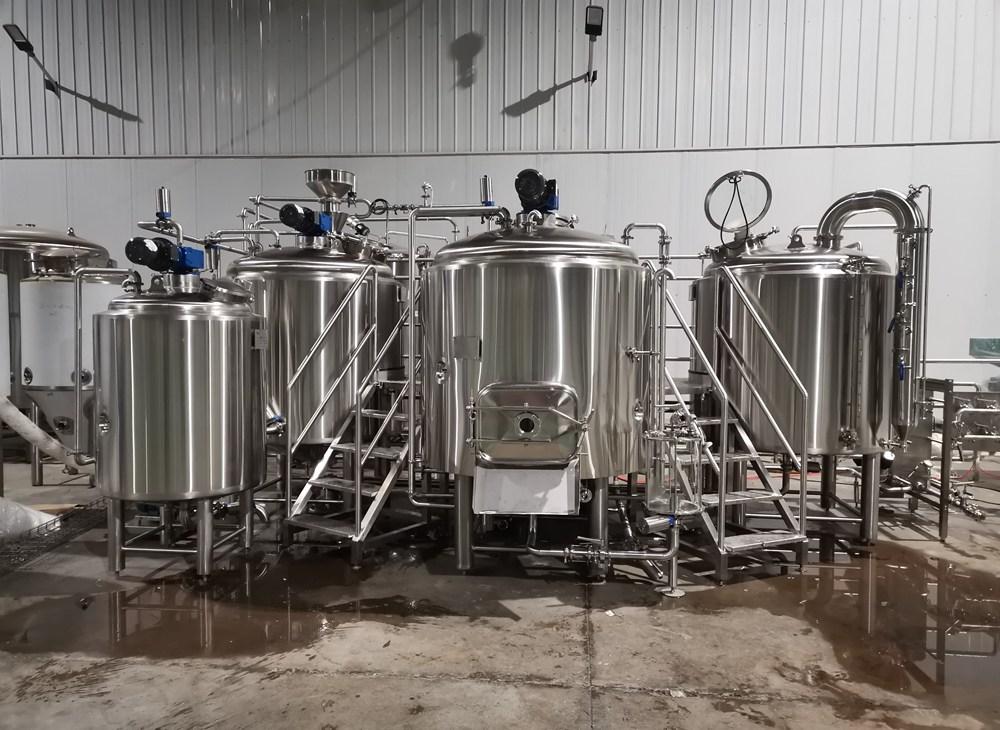Enzyme is a protein substance, each enzyme has its own inactivation temperature, and high temperature is a method of inactivating enzyme activity.
During the boiling process in beer equipment such as a kettle tun or a boiling tun in brewery, the high temperature environment makes the activities of various enzymes lose, which is the most direct and most important role in the wort boiling operation when doing beer brewing. Due to the high temperature, the hydrolytic enzymes of various saccharification, such as starch hydrolase and protein hydrolase, are denatured and inactive, thus ensuring the stability of the saccharide substances in the wort that can be used for fermentation, and further maintaining the saccharification after saccharification. The balance of substances in wort.

2) Leaching and isomerization of substances in hops
The main components of hops include hop resin and essential oil. According to the requirements of different types of beer, different types of hops can be added twice or three times during boiling. To ensure that the main components of hops such as α-acid are more easily dissolved in the wort, the bitter hop product is usually put into the early stage of wort boiling, which can also make the main bitter provider in the bitter hop α-acid easier to isomerize The reaction forms iso-α-acid. Some data show that the pH value of wort has a great influence on the leaching degree of hop components in wort, that is, pH value is positively correlated with the leaching degree and isomerization of α-acid in hops. Therefore, controlling the pH value of wort has important guiding significance for boiling. The function of adding fragrant hops in the later stage of boiling is to give the beer the aroma of hops. The hop oil is easily lost by evaporation at high temperature. Therefore, adding fragrant flowers in the later stage is equivalent to shortening the evaporation time and avoiding more hop oil components. Lost with evaporation of water. Of course, the production of different types of beer has different requirements for the amount of hops used and the way they are used during the boiling process. The hop addition process should be formulated according to the characteristics of the beer, and cannot be generalized.
3) Evaporate excess water
The process of evaporating excess water is also called the concentration process of wort, which is also the most direct manifestation of wort boiling. The purpose of concentrating wort is obvious, which is to increase the proportion of fermentable sugars in the wort by evaporating excess water. The more water evaporated, the greater the proportion of final sugars. According to the different requirements of the brewed beer type for the sugar content, the evaporation time can be adjusted to achieve the ideal sugar content for the beer fermentation process.
4) Sterilization
The temperature of wort boiling can reach above 95°C, and the time generally lasts for at least 60 minutes. Therefore, during this process, general types of harmful microorganisms will be killed by high temperature. Usually we think that the wort after the wort boiling process It can be used as sterile fermentation broth to enter the fermenter through the heat exchange device and wait for inoculation.
5) The volatilization of discordant flavor substances
One of the flavors of beer is a corn-like substance, dimethyl sulfide, which is formed by the reaction of S-methylmethionine formed during the germination period of barley during the boiling process. The results show that with the boiling time The prolongation, the lower the content of dimethyl sulfide. According to the above theory, we can use the method of increasing the boiling intensity and time to volatilize as much DMS as possible from the wort.
6) Denaturation and aggregation of protein components in wort
Although protein can give beer a more mellow taste, some proteins can negatively affect the flavor of beer. Studies have shown that the pH value of wort plays an important role in protein aggregation. Generally speaking, the pH value is in the range of 5.2-5.6, which is most favorable for protein aggregation. High temperature will cause protein denaturation reaction, the solubility of the denatured protein in the wort will decrease, and then the wort will be precipitated in the form of flocculent precipitates. Based on the above theory, finding a suitable degree to selectively remove unwanted proteins while retaining the desired proteins is a key to careful study.
7) Color and taste
The influence of the color and taste of craft beer is related to the Maillard reaction, which is a special reaction between sugars and amino acids. The product of Maillard reaction is melanin, which is the maker of the color of the wort. At the same time, different sugars and different amino acids are produced. The different types of melanin products produced by the reaction have different tastes, and aldehydes will be formed during the Maillard reaction. In addition, the color and flavor of the wort are also related to the pH value of the wort, which all contribute to the color and taste of the beer. important factor.
Learn more how Tiantai beer equipment company to not only produce the best quality brewery equipment for flavor-rich beers, but also help them to optimize the configuration, maximize process uptime and reduce beer loss when they brewing, PLEASE DON’T HESITATE TO CONTACT WITH US!
Hubert
Email: [email protected]




.jpg)

Get In Touch